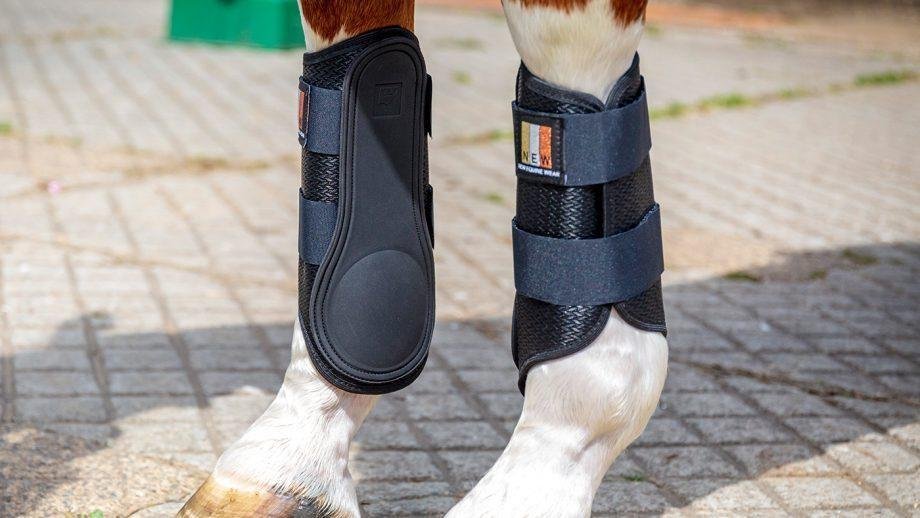
Table of Contents
Introduction
As a horse owner, you want the best for your equine partner. Ensuring their health and safety is of utmost importance, and one aspect that you might be considering is the use of horse boots. But what exactly are horse boots? Why are they essential for your horse’s health and performance? In this article, we’ll explore the various types of horse boots, their benefits, and how to properly select and fit them for your horse.
1. What are Horse Boots?
Horse boots are protective gear designed to be worn on a horse’s legs and hooves. They serve various purposes, such as providing support, preventing injuries, and enhancing performance. Horse boots come in different types, each with its specific function and use. From hoof boots to tendon boots, the range of options ensures that you can find the perfect equine boot to suit your horse’s needs.
2. Types of Horse Boots
a. Hoof Boots
Hoof boots are designed to protect your horse’s hooves from damage caused by various surfaces, such as rocky terrain or pavement. These boots can be used as an alternative to horseshoes, offering a more natural and comfortable solution for hoof protection. Hoof boots are particularly useful for horses that have sensitive hooves, are prone to hoof-related issues, or are transitioning to barefoot.
b. Splint Boots
Splint boots, also known as brushing boots, are designed to protect a horse’s lower leg from injuries caused by the opposite leg striking it while in motion. This type of boot is typically used during exercise or training to prevent injuries and provide support to the horse’s leg.

c. Tendon Boots
Tendon boots are specifically designed to protect the tendons in a horse’s lower leg from injury. These boots are typically used during high-impact activities, such as show jumping or cross-country, where the risk of tendon injury is higher. Tendon boots offer additional support and protection to the horse’s leg, helping to prevent strain and injury.
d. Bell Boots
Bell boots, also known as overreach boots, protect a horse’s heel and coronary band from overreaching injuries. Overreaching occurs when a horse’s hind hoof strikes the back of the front hoof, causing damage to the heel and coronary band. Bell boots are typically used during exercise, training, and turnout to prevent injuries caused by overreaching.
e. Polo Wraps
Polo wraps are a type of soft, flexible bandage used to provide support and protection to a horse’s legs during exercise or training. They are typically made of fleece or a similar material and are secured with Velcro closures. While not as protective as a boot, polo wraps offer a lightweight and breathable option for leg protection.
3. Benefits of Horse Boots
a. Hoof Protection
Horse boots provide essential protection to your horse’s hooves, helping to prevent injuries and maintain overall hoof health. Hoof boots can be particularly beneficial for horses with sensitive hooves or those prone to hoof-related issues.

b. Leg Protection
Equine boots offer valuable protection to your horse’s legs, shielding them from injuries caused by impact, overreaching, or brushing against obstacles. This protection is especially important during training or high-impact activities, where the risk of injury is greater.
c. Injury Prevention
By providing support and protection to your horse’s legs and hooves, horse boots help prevent injuries that could sideline your equine partner. This not only keeps your horse healthy and happy but can also save you time and money on vet bills.
d. Improved Performance
In addition to protecting your horse from injury, horse boots can also enhance their performance. Properly fitted boots can provide support and stability, allowing your horse to move more confidently and efficiently.
4. Selecting the Right Horse Boot
a. Size
When choosing horse boots, it’s crucial to select the correct size for your horse. An ill-fitting boot can cause discomfort or even injury. Be sure to measure your horse’s legs and hooves according to the manufacturer’s guidelines to ensure a proper fit.
b. Material
Horse boots come in various materials, including neoprene, leather, and synthetic materials. The choice of material will depend on your personal preference, as well as the specific needs of your horse. Consider factors such as durability, breathability, and ease of cleaning when selecting a material.
c. Style
As previously mentioned, there are various types of horse boots available, each designed for a specific purpose. Be sure to choose the style of boot that best suits your horse’s needs and the activities they will be participating in.
5. Fitting Your Horse’s Boots
Properly fitting your horse’s boots is essential for their comfort and safety. Be sure to follow the manufacturer’s guidelines for measuring and fitting, and regularly check the boot’s fit to ensure it remains snug and secure. Additionally, it’s essential to clean and maintain your horse’s boots to ensure their longevity and effectiveness.
Conclusion
Horse boots are an essential investment for any horse owner looking to protect their equine partner’s health and performance. By selecting the appropriate type, size, and material of boot for your horse, you can prevent injuries, enhance performance, and keep your horse happy and healthy. Remember to properly fit and maintain your horse’s boots for optimum effectiveness and longevity.
Read more: First Time Visiting Phoenix